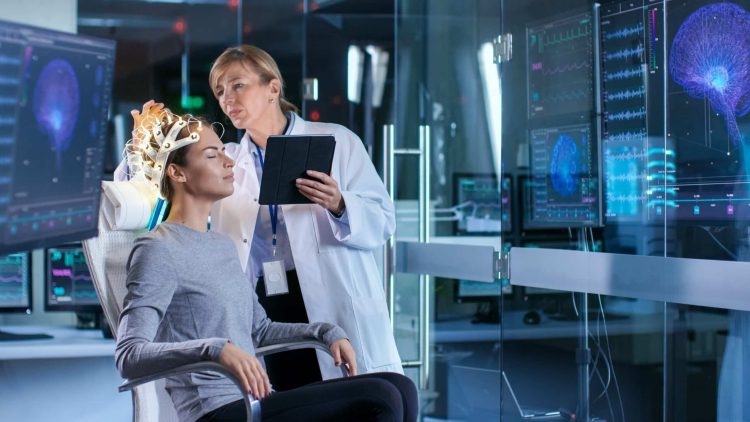Introduction to Digital Biofeedback
In today’s high-pressure world, stress management has become a vital component of overall health and wellness. Traditional relaxation techniques like meditation and deep breathing remain popular, but technological advances have introduced new, interactive ways to manage stress: digital biofeedback. This cutting-edge approach leverages real-time physiological data—often delivered through visual or audio cues—to train individuals in recognizing and regulating their mind-body responses. By enhancing self-awareness and control over stress reactions, digital biofeedback promises to revolutionize stress relief in both clinical and everyday settings. But is it truly the future of stress management?
Understanding Biofeedback: Mind-Body Connection in Action
Biofeedback is a technique that involves measuring physiological signals such as heart rate, skin conductance, breathing patterns, and brainwave activity, then providing this information back to the user in a comprehensible form. The goal is to make unconscious bodily processes consciously accessible, enabling individuals to learn how to modulate these responses voluntarily. For stress relief, this means becoming aware of tension indicators—like rapid heartbeat or shallow breathing—and using learned strategies to restore calm. Digital biofeedback advances this concept by integrating sensors with apps and wearable devices that provide immediate feedback via screens, soundscapes, or vibrations, making training accessible, engaging, and user-friendly.
How Visual Feedback Enhances Stress Regulation
Visual biofeedback typically translates physiological data into intuitive graphics or animations. For example, heart rate variability (HRV) can be displayed as a pulsing orb that expands and contracts with the user’s breathing. When the user achieves a calm, rhythmic pattern, the orb glows or moves smoothly, signaling effective stress regulation. Such immediate visual cues help users identify when their body is tense or relaxed, reinforcing positive behaviors like slow breathing or focused attention. This visual approach appeals particularly to those who benefit from concrete, graphical representations and enhances motivation through gamified progress tracking. It bridges the gap between abstract physiological signals and practical stress management strategies.
The Role of Audio Feedback in Mindfulness and Relaxation
Audio biofeedback complements visual cues by using sound to guide the user’s state. This can take many forms, from calming tones that shift with heart rate variability to spoken coaching that encourages slow breathing and mental focus. For example, a device might play ocean waves that become louder or softer depending on the user’s tension level, or emit a steady rhythm to synchronize breathing. Audio feedback is especially beneficial for users who prefer less screen time or who meditate with eyes closed, allowing for deeper immersion and relaxation. Combining audio with guided instructions can support the development of mindful awareness, reinforcing the mind-body connection vital to stress relief.
Leading Digital Biofeedback Apps and Tools
The market now features a variety of digital biofeedback tools tailored for home use, ranging from simple wearable sensors to sophisticated neurofeedback systems. Muse is one of the most recognized, offering an EEG headband that tracks brainwaves and provides real-time audio feedback to cultivate calm and focus during meditation. HeartMath’s Inner Balance sensor uses HRV data paired with an app to train emotional resilience through breathing exercises and interactive games. Another popular option is the AliveCor KardiaMobile, which monitors heart rhythm and offers stress management guidance alongside medical-grade ECG data. Devices like Spire clip onto clothing and detect breathing patterns, alerting users to signs of tension with gentle vibrations and app-based coaching. These tools emphasize ease of use, personal data insights, and integration with smartphones to support consistent practice.

Scientific Evidence Supporting Digital Biofeedback for Stress Relief
Numerous studies validate the efficacy of biofeedback for reducing stress and improving mental health. Research shows that HRV biofeedback, in particular, enhances autonomic nervous system balance, resulting in lower cortisol levels, reduced anxiety, and better emotional regulation. EEG neurofeedback has demonstrated benefits in decreasing symptoms of anxiety disorders and improving attentional control. Importantly, digital biofeedback platforms allow for sustained training outside clinical settings, empowering users to develop self-regulation skills autonomously. Clinical trials suggest that even brief, daily biofeedback sessions can produce measurable physiological and psychological improvements, underscoring its potential as a scalable, accessible stress management solution.
Advantages of Digital Biofeedback over Traditional Stress Relief Methods
Digital biofeedback’s strengths lie in its objective, data-driven approach and interactive nature. Unlike traditional methods that rely solely on subjective awareness, biofeedback offers measurable insights into the body’s stress responses, helping users develop accurate self-monitoring skills. The gamified interfaces and real-time progress indicators foster motivation and adherence to practice routines. Moreover, home-use devices remove barriers to accessing therapy, making effective stress management available anytime, anywhere. The integration of AI and adaptive algorithms further personalizes feedback, optimizing training for individual physiological patterns and goals, which is difficult to achieve in one-size-fits-all traditional techniques.
Potential Challenges and Considerations
While promising, digital biofeedback is not without limitations. Some users may find the technology intimidating or overly technical, hindering engagement. Device accuracy can vary, particularly in consumer-grade products, leading to inconsistent feedback. Overreliance on technology risks undermining development of intrinsic mindfulness and self-regulation skills. Privacy and data security concerns arise from collecting sensitive physiological information. Furthermore, biofeedback is a tool rather than a standalone cure—optimal stress relief often requires complementary lifestyle changes, therapy, or medication. Healthcare providers should guide users in selecting appropriate devices and integrating biofeedback into holistic mental health plans.
Future Prospects: Integrating Biofeedback into Daily Life
The future of digital biofeedback for stress relief is bright, with ongoing innovations expanding its reach and efficacy. Wearable sensors are becoming smaller, more comfortable, and more accurate. Integration with smart home systems and virtual reality environments promises immersive relaxation experiences. AI advancements enable predictive analytics that can alert users to rising stress before conscious symptoms appear, allowing preemptive intervention. As digital mental health tools gain acceptance, biofeedback may become a routine part of wellness regimens, workplace health programs, and telehealth services. Cross-disciplinary collaborations among neuroscientists, engineers, and psychologists will refine protocols and expand clinical applications beyond stress relief to anxiety, depression, and PTSD.
How to Get Started with Digital Biofeedback
For those interested in exploring digital biofeedback, starting with a simple, user-friendly device is advisable. Begin by committing to short daily sessions, focusing on learning to interpret feedback rather than immediate stress elimination. Combining biofeedback training with established relaxation practices—such as mindfulness meditation, yoga, or cognitive behavioral techniques—enhances overall effectiveness. Monitoring progress through app dashboards can boost motivation. Importantly, set realistic expectations and consider consulting healthcare professionals, especially if experiencing severe stress or mental health challenges. Digital biofeedback is a journey of increasing mind-body awareness that unfolds with consistent practice and patience.
Conclusion: Digital Biofeedback as a Transformative Stress Relief Tool
Digital biofeedback represents a groundbreaking approach to stress management, blending technology with the timeless mind-body connection. By translating hidden physiological signals into tangible, actionable feedback, it empowers users to take control of their stress responses with unprecedented precision and engagement. Though not a panacea, it complements traditional stress relief methods and opens new pathways for personalized, accessible mental wellness. As technology advances and evidence grows, digital biofeedback is poised to become a mainstay in the future of stress relief, offering hope for millions seeking calm in an increasingly stressful world.











































